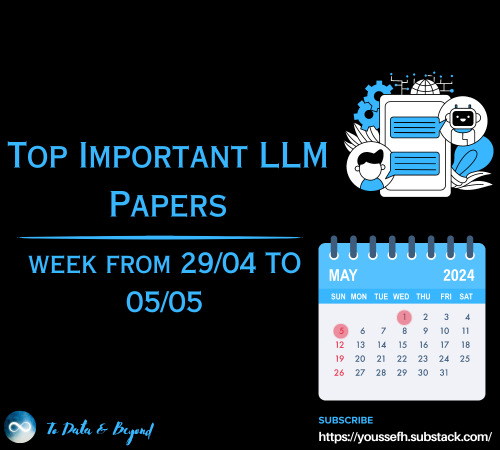
Transformer Architectures and the Rise of BERT, GPT, and T5: A Beginner’s Guide
Last Updated on November 6, 2023 by Editorial Team
Author(s): Manas Joshi
Originally published on Towards AI.

In the vast and ever-evolving realm of artificial intelligence (AI), there are innovations that don’t just make a mark; they redefine the trajectory of the entire domain. Among these groundbreaking innovations, the Transformer architecture emerges as a beacon of change. It’s akin to the invention of the steam engine during the Industrial Revolution, propelling AI into a new era of possibilities. This architecture has swiftly become the backbone of many modern AI systems, especially those that grapple with the complexities of human language.
Imagine the last time you interacted with a virtual assistant, perhaps asking it for weather updates or seeking answers to a trivia question. The smooth, almost human-like response you received is, in many cases, powered by the Transformer architecture. Or consider the numerous times you’ve browsed a website and chatted with a customer support bot, feeling as if you’re conversing with a real person. Again, behind the scenes, it’s often the Transformer working its magic.
The beauty of the Transformer lies in its ability to understand context, relationships, and nuances in language. It’s not just about recognizing words but understanding their significance in a given sentence or paragraph. For instance, when you say, “I’m feeling blue,” you’re not talking about the color but expressing a mood. The Transformer gets this, and that’s what sets it apart.
In this article, we’ll embark on a journey to demystify this remarkable architecture. We’ll delve deep into its workings and explore its most celebrated offspring: BERT, GPT, and T5. These models, built on the foundation laid by the Transformer, have achieved feats in AI that were once thought to be the exclusive domain of human cognition. From writing coherent essays to understanding intricate nuances in diverse languages, they’re reshaping our interaction with machines.
The Magic Behind Transformers
In our daily lives, we’re constantly bombarded with information. From the hum of traffic outside our windows to the buzz of conversations in a café, our senses pick up a myriad of stimuli. Yet, amidst this cacophony, our brains possess a remarkable ability: the power of selective attention. If you’ve ever found yourself engrossed in a book while a party rages around you, or if you’ve managed to pick out a familiar voice in a crowded room, you’ve experienced this firsthand. This innate human ability to focus on what’s crucial and filter out the noise is the essence of the magic behind the Transformer architecture in AI.
At a fundamental level, the Transformer is designed to handle sequences of data, much like a series of events or a string of thoughts. Traditional models, when faced with sequences like sentences or paragraphs, would process them much like reading a book word by word, linearly and in order. While effective to a degree, this method often missed the broader context, the intricate dance of meaning between words spaced far apart. It’s akin to understanding the plot of a novel by only reading every tenth page; you’d get some of the story, but miss out on the depth and nuance. Enter the Transformer. Instead of being bound by this linear approach, it can, metaphorically speaking, read multiple parts of a book simultaneously. It can focus on the introduction while also considering the climax, drawing connections and understanding relationships that a linear read might miss. This is achieved through what’s known as the ‘attention mechanism’. Just as our brains weigh the importance of stimuli, deciding what to focus on, the Transformer weighs the significance of different parts of a sequence.
Let’s consider a practical example. Imagine the sentence: “Jane, who grew up in Canada, is fluent in both English and French.” A traditional model might first focus on “Jane” and then move to “Canada”, taking time to understand the relationship between the two. The Transformer, however, can instantly recognize the connection between “Jane” and “Canada”, while simultaneously understanding the significance of her fluency in “English and French”. It grasps the entire context, the full story behind Jane’s linguistic abilities, in a holistic manner.
This capability becomes even more crucial in complex scenarios. Consider a mystery novel where a clue in the first chapter is only resolved in the last. While a linear approach might forget the initial hint by the time the conclusion rolls around, the Transformer retains and connects these distant pieces of information, much like an astute detective linking disparate clues to solve a case.
Moreover, the Transformer’s magic isn’t limited to just text. It’s been applied to a range of data types, from images to sounds. Think of watching a movie and understanding the significance of a character’s gesture based on a flashback scene, or listening to a symphony and recalling a recurring motif. The Transformer can do this with data, drawing connections, recognizing patterns, and providing a depth of understanding previously unattainable.
In essence, the Transformer has redefined the rules of the game in AI. It doesn’t just process information; it understands context, relationships, and nuances, bridging gaps and illuminating connections. It’s a leap forward, a shift from mere computation to genuine comprehension.
BERT: The Context Whisperer
Language, in its essence, is a tapestry of words woven together by the threads of context. Every word we utter or write carries weight and meaning, often shaped by the words that surround it. This intricate dance of words and meanings is what BERT, an acronym for Bidirectional Encoder Representations from Transformers, is designed to understand and interpret.
Imagine reading a novel where a character says, “I’m feeling blue today.” Without context, one might visualize the color blue. However, with an understanding of language nuances, it’s clear the character is expressing sadness. This is the kind of contextual understanding that BERT brings to the table. Instead of analyzing words in isolation, BERT looks at them in relation to their neighbors, both preceding and following. It’s like reading both the left and the right page of a book simultaneously to grasp the full story.
Let’s delve into another example. Consider the sentence: “I went to the bank to withdraw money.” Now, compare it with: “I sat by the river bank and watched the sunset.” The word ‘bank’ appears in both sentences, but its meaning shifts dramatically based on context. Traditional models might struggle with such nuances, but BERT shines. It recognizes the different implications of ‘bank’ in each scenario, ensuring accurate interpretation.
This bidirectional approach of BERT is akin to having two flashlights in a dark room, one shining from the start of a sentence and the other from the end, illuminating the words from both directions. The result? A well-lit room where the meaning of each word, influenced by its neighbors, becomes crystal clear.
BERT’s prowess in understanding context has made it a cornerstone in numerous AI applications. From search engines that better grasp user queries to chatbots that respond with uncanny accuracy, BERT is reshaping our digital interactions. It’s not just about recognizing words; it’s about understanding the stories they tell when strung together.
GPT: The Storyteller
In the annals of human history, storytelling has been a powerful tool. From ancient campfires to modern-day cinemas, stories shape our understanding, evoke emotions, and bridge cultures. In the realm of AI, GPT, which stands for Generative Pre-trained Transformer, emerges as a digital storyteller, weaving tales and crafting narratives with a finesse that often feels eerily human.
Imagine sitting around a campfire, starting a tale, and then passing the torch to someone else to continue. GPT operates on a similar principle, but in the vast landscape of language. Feed it a sentence or a phrase, and it takes the baton, continuing the narrative in ways that are coherent, contextually relevant, and often creatively surprising. It’s like having a co-author that never tires, always ready to pick up where you left off.
Let’s consider a practical scenario. If you were to give GPT the beginning of a story, such as “In a town where magic was forbidden, a young girl discovered a mysterious book in her attic,” GPT could spin a tale of adventure, intrigue, and suspense, detailing the girl’s journey, the challenges she faces, and the secrets the book unveils. It doesn’t just add sentences; it builds a world, populates it with characters, and charts a narrative arc.
This ability of GPT to generate text isn’t limited to just stories. It can craft poems, answer questions, write essays, and even generate technical content. Its versatility stems from its training on vast amounts of diverse text, enabling it to don multiple hats — from a novelist to a poet, from a journalist to a tutor.
In essence, GPT is not just a model; it’s a digital bard. In its strings of code and algorithms, it carries the legacy of ancient storytellers, blending it with modern-day AI capabilities. It’s a testament to how far we’ve come in the journey of AI, where machines don’t just compute but also create.
T5: The Swiss Army Knife
In the world of tools, the Swiss Army knife stands out, not because of its size or its singular function, but due to its incredible versatility. It’s compact, yet packed with tools ready to tackle a myriad of tasks. Similarly, in the digital realm of AI, T5, short for Text-to-Text Transfer Transformer, emerges as the versatile multi-tool, adept at handling a diverse range of linguistic challenges.
Imagine having a single tool that could seamlessly translate languages, summarize lengthy articles, answer intricate questions, and even rewrite content in a different tone. That’s T5 for you. Instead of being designed for one specific task, T5 approaches challenges with a unique perspective: it views every problem as a text-to-text task. Whether it’s converting a question into an answer or translating English to Mandarin, T5 perceives it as transforming one sequence of text into another.
For instance, give T5 a complex scientific article and ask it for a summary. It reads the detailed content and distills it into a concise, understandable version. Or pose a question about a historical event, and T5 sifts through its knowledge to craft a relevant answer. Its adaptability and wide-ranging capabilities make T5 a standout, much like the Swiss Army knife in a world of specialized tools.
Why Does All This Matter?
The rise of Transformer-based models like BERT, GPT, and T5 has significantly impacted our daily lives. From the chatbots that assist us on websites to the voice assistants that answer our queries, these models play a pivotal role.
Their ability to understand and generate human language has opened doors to countless applications. Businesses can offer better customer support, content creators can get AI-driven suggestions, and researchers can analyze vast amounts of text quickly. The Transformer architecture, with its unique approach to data and attention, has reshaped the landscape of AI. These models have set new standards in understanding and generating human language. As we continue to innovate and refine these models, the line between human and machine understanding of language might become even blurrier, heralding a future where AI truly understands us.
Join thousands of data leaders on the AI newsletter. Join over 80,000 subscribers and keep up to date with the latest developments in AI. From research to projects and ideas. If you are building an AI startup, an AI-related product, or a service, we invite you to consider becoming a sponsor.
Published via Towards AI

 Logo:
Logo:  Areas Served:
Areas Served: 






